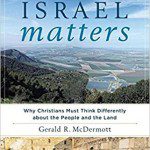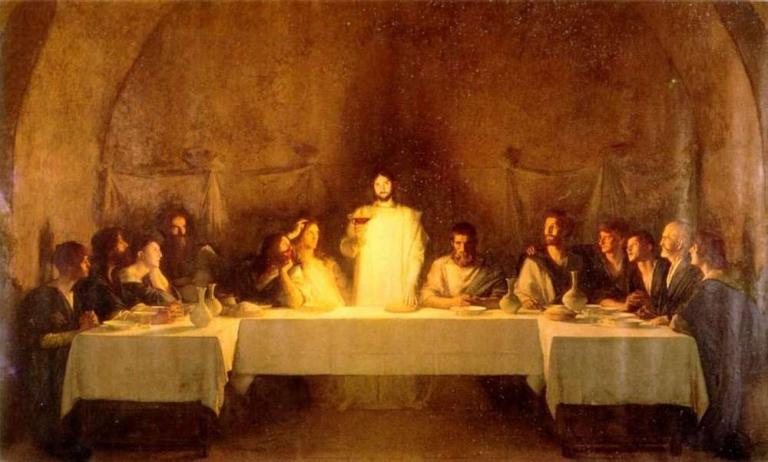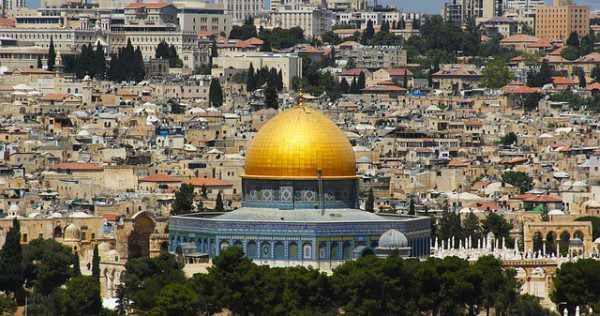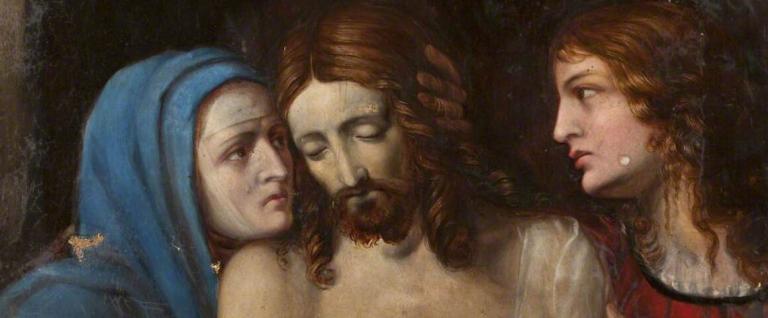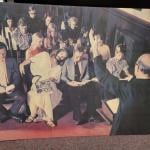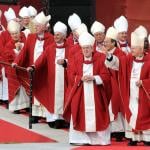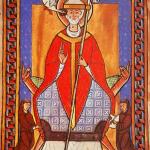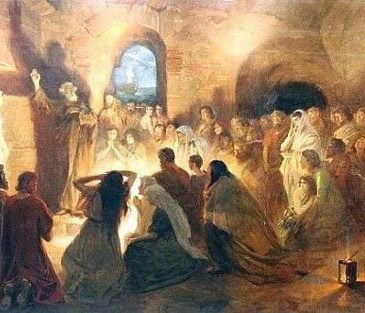 Today I am starting a series on liturgy and eucharist.
Today I am starting a series on liturgy and eucharist.
There has been something of a debate among Anglicans over Gregory Dix and his giant work on liturgy in the early and historic church, The Shape of the Liturgy (1945). More recent scholars of the liturgy have taken issue with some of his claims. Because I think there is much to be learned from both Dix and his later critics, I am going to share my notes on Dix’s massive book plus a recent survey of the field by a leading liturgical historian, Paul F. Bradshaw, in his The Search for the Origins of Christian Worship, 2nd edn (2002). I will draft outlines of each work, and then conclude with a comparative set of observations. Today is my first installment on Dix.
Dom Gregory Dix, The Shape of the Liturgy (Westminster: Dacre Press, 1945)
- Dix claims to have found a “single normal or standard structure of the [eucharistic] rite as a whole” (xi). This is what he means by the “Shape” of the Liturgy.
- In at least one major particular it has been altered from the pattern originally laid down at the Last Supper, but apart from some isolated groups has everywhere remained unchanged for 1800 years (xi).
- Whenever the standard structure (“outline”) has been broken up, there have been noticeable results for Christian living (xii).
- For example, where there is a pattern of the faithful not communicating, it is reflected in the deficient piety of the Middle Ages.
- Another pattern of doing the Eucharist in the wrong way has resulted in post-renaissance individualism, both in church and society (xii).
- Because the prayer of the Eucharist is an act, to a great extent it expresses a conception of human life as a whole.
- “It relates the individual worshiper to God and His law, to redemption, to other men, to material things and to his own use of them. What else is there in life?” xviii
- At the Eucharist the individual is perfectly integrated in society.
- Here is “a true hierarchy of functions w/in a society organically adapted to a single end, together with a complete equality of recompense.”
- Here is the proclamation and employment of humanity’s redemption thru the personal sacrifice of Jesus Christ at a particular time and place in human history, communicated to us at other times and places through the church which is the “fulfillment” of Him. xviii
- Here is Eucharistic Man, giving thanks w/ the product of his labors upon the gifts of God, daily rejoicing w/ his fellows in a worshipping society which is grounded in eternity. This is the man to whom it was promised on the night before Calvary that he should henceforth eat and drink at the table of God and be a king. xviii-xix
- “It relates the individual worshiper to God and His law, to redemption, to other men, to material things and to his own use of them. What else is there in life?” xviii
- The liturgy and the Eucharistic action
- The Eucharist is meant to be a corporate action (“Do [poiete, plural] this”), the bread broken so that it may be shared, and “we being many” are made one Body.
- So those who take part are indissolubly united w/ each other and with all who are in the Body, “because” each is thereby united to Christ (1 Cor 10.17). 1
- The church is a corporate “holy priesthood to offer up spiritual sacrifices acceptable to God through Jesus Messiah” (1 Pet 2.5). 2
- The Eucharist had already been at the heart of Christian worship for twenty years before the first NT documents were written. 3
- Eucharistic worship from the outset was based not on Scripture but solely on tradition. The method of celebration was based not on authoritative code but on the tradition of custom alone.
- Already in the NT is a variety of meanings within the single rite. 3-4
- By the time of the NT, the Eucharist had illuminated everything about Jesus for his disciples: his person, messianic office, miracles, death, and redemption. It was the vehicle of the gift of the Spirit (1 Cor 12.13b), the means of eternal life (Jn 6.53-54), the cause of the unity of the church (1 Cor 10.17). 4
- The Church found in the Eucharist the epitome of the Gospel.
- There are big gaps in our knowledge about the liturgy up thru the 3rd century. Not till the later 4th cent. do we have the Shape of the Liturgy.
- Yet by then the great historic families of liturgies have their own different peculiarities. 5
- The further back we trace the contents of the euch prayer, the “more remarkable are the differences” among the various groups of churches.
- The meaning of the euch action was expressed in a great variety of ways.
- Jesus gave us the single primal fact of the rite w/o commentary, beyond the identification of the elements w/ His own sacrificial Body and Blood. It was left to the Church to explore for herself the inexhaustible depths of its meaning. 6
- The classical form or outline of the Eucharistic action are still maintained in both East and West.11
- The performance of the liturgy
- In the NT and until the 4th, the euch rite is regarded as something done, and what is said is only one incidental constituent part. 12
- So while modern Christians talk about “hearing” or “attending” a Eucharist, or the priest “saying” the Eucharist, the ancients spoke of “doing the eucharist,” “performing the mysteries,” and “doing the oblation [offering].” 12
- The ancient approach was less on feelings, tho they could be there, and far more on the sacramental act as the expression of a will already intent on amendment of life, and as the occasion of its acceptance and sanctification by God. 13
- This is why when the shape was altered, all that was left for the laity to do was to “hear” or “attend” (a synonym for hearing). 14
- So the Eucharist was something done and it was corporate. It was an action not of the celebrant only but of the whole church. 15
- But it was not public. It was intensely private—strangers were rigidly excluded. 16
- It was the indiscriminate admission to baptism and confirmation of infant children in the 4th & 5th cents. when all society began to turn nominally Xn [this is my abbreviation from here on for “Christian”] which was at the root of the decline of lay communion which started then and proceeded for the next millennium. 18
- Between the 7th and 19th centuries all over Christendom the clergy were normally the only frequent communicants.
- The secularization of society in the 19th and 20th cs has once more distinguished the laity as members of the “household of God” (Eph 2.19) and so included them in the “exclusiveness” of the Eucharist which the NT demands. 19
- It was at church alone that a Xn could do his divinely-given personal part in the corporate act of the church, the eucharist which expressed before God the vital being of the church and each of its members.
- It was a duty to participate, and no other group meeting could substitute.
- St Ignatius (c. 35-c. 108) wrote to the church at Philadelphia, “Be careful to observe one eucharist, for there is one flesh of our Lord Jesus Messiah and one Cup unto union in His Blood; there is one altar, as there is one bishop together with the presbytery and the deacons.” 21
- For Ignatius and most of the other early Xn writers, it is the church as a whole and not one order of it (priests or deacons or bishop or laity) which is Christ on earth.
- The whole church prayed and offered the eucharist, as the re-calling before God and man of the offering of Christ 29
- The bishop sat enthroned as the “image of God” and type of the Father, to whom the presbyters deferred as unto the Father.
- For Hippolytus (early 3rd at Rome), the bishops were high-priests, teachers, and watchmen of the church. The bishop’s chair (cathedra) was a teacher’s chair.
- After the middle of the 4th c, the “presbyter” is referred to as a priest (hierus).The priest celebrated the eucharist as the bishop’s assistant.
- Thus priesthood, which had been the function of all members of the church, with the bishop as high-priest, becomes a special attribute of the second order of the ministry. 34
- The deacon, a derivation from the order of the Seven in Jerusalem, has an order of his own, ministering the Chalice, reading the gospel, and announcing to the assembly what is done at each stage. He never addresses God directly on behalf of the church, which is the prerogative of the bishop. When the deacon “bids” prayers, he speaks to the church, not to God. 35
- In the NT and until the 4th, the euch rite is regarded as something done, and what is said is only one incidental constituent part. 12
- The Eucharist is meant to be a corporate action (“Do [poiete, plural] this”), the bread broken so that it may be shared, and “we being many” are made one Body.

